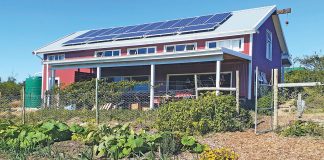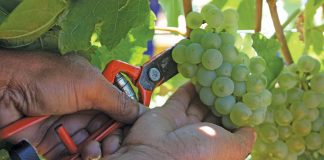Poor profitability due to high input costs and low producer prices is having a devastating impact on South Africa’s dairy industry, causing almost 30 producers to leave the industry per month. Producers are even slaughtering dairy cows, as meat has become more profitable than milk. However, a survey by David Beca, managing director of Red Sky, has shown that South Africa’s dairy profitability compares favourably with that of New Zealand and Australia. Glenneis Erasmus investigates.
DAVID BECA FROM RED SKY – an Australian/New Zealand-based company specialising in agricultural benchmarking software – recently conducted a survey that revealed the South African dairy industry to be far more profitable in terms of return on assets than its New Zealand or Australian counterparts were.
The difference in profitability, however, decreases when the comparison is made in terms of profit/ha or profit/cow. The higher profitability of South African dairymen is primarily due to a major difference in land prices. Land, even though expensive in South Africa, is almost half the price of that in Australia and almost a quarter of that in New Zealand.
Production costs are higher in South Africa than in Australia and New Zealand, and this can be attributed to two factors. First, pasture comprises a lower proportion of the South African dairy cow’s diet. Second, core costs, such as animal health, feed, fertilisation, transport and depreciation, are higher in South Africa than in these two countries. “Farmers with the lowest cost of production are not always the most profitable,” cautions Beca. ”They do, however, carry a lower level of risk and hence are likely to be in a stronger position to survive adverse weather, a drop in the milk price, an increase in feed price or similar challenges.
Consequently, the higher production cost for South African farmers is generally associated with higher profit than that in Australia and New Zealand. This, however, should not stop farmers from finding ways to reduce costs.” With interest rates in SA higher than in Australia and New Zealand the South African economy, and by implication South African dairy farming, is associated with higher risk. SA also has greater risk in terms of climatic conditions.
In combination with the higher financial risk, this results in SA needing a higher profit level to attract investment than in the case of Australia and New Zealand. The cost of producing pasture is relatively similar in the three countries, averaging around R932/t DM (tons Dry Matter) for average producers and R783/t DM for more efficient top producers. The cost of pasture is lowest in New Zealand due to the higher proportion of pasture harvested in this country. This advantage is, however, eroded once variable and capital costs are added. According to Beca, SA could reduce costs by harvesting more pasture with higher energy content. At around R1 110/t DM, feed cost in Australia and SA is very similar. But in New Zealand it is significantly higher, averaging around R1 517/t DM. The average cost of concentrates is highest in SA at R1 806/t in comparison with R1 597/t in Australia and R1 757/t in New Zealand.
Beca suggests that the higher use of concentrates in SA might be due to an over-specification of protein in the ration on account of the lower potential of actively growing pasture and/or an overspecification of minerals, trace elements, vitamins and other additives.
South Africans use almost twice as much nitrogen fertiliser as Australians and New Zealanders do. Beca thinks this may be too much and may be one area where production cost could be reduced.
Lagging labour efficiency
Labour efficiency, defined as number of cows per full-time labourer, is far lower in SA than in Australia and New Zealand. On average, South African dairymen employ one full-time labourer for every 20 cows, in comparison to Australia and New Zealand with one full-time employee for every 113 cows. This trend is also evident on top-producing farms. In SA there is one labourer for every 28 cows, in Australia for every 137 cows and in New Zealand for every 152 cows.
South African cow management cost in terms of money and labour compares well with that in Australia and New Zealand. SA averages around R1 579 per cow per lactation compared with R1 960 in Australia and R1 685 in New Zealand. On top-producing farms in Australia and New Zealand these costs are lower – R1 691 and R1 344 per cow respectively. In SA, top producers pay R10 more per cow than average producers do. Labour is one area where SA could possibly reduce costs and increase profitability, says Beca. “Australia and New Zealand have become increasingly labour-efficient over the past few years and this trend is expected to continue.
South Africa has to find ways to increase wages and maintain employment while ensuring that the industry remains internationally competitive.” South African milk production per hectare is higher at 17 557 litres/ha than that of Australia and New Zealand where production averages around 13 318 litres/ha and 13 118 litres/ha respectively. Milk solid production per hectare is, however, quite similar between the countries with SA producing 1 214kg/ha, New Zealand 1 115kg/ha and Australia 1 013kg/ha. The same trend is evident between the top producers in each country (see Table 4). The difference between average producers in SA and Australia becomes smaller when production per cow is compared – 5 962 litres/cow and 5 607 litres/cow milk, 413kg/cow and 426kg/cow milk solids produced per lactation respectively.
Production is lower in New Zealand, with an average production of 4 162 litres/cow and 353kg/cow milk solids per lactation. Beca explains the higher production per hectare in SA is primarily due to a higher stocking rate than in Australia – SA’s 2,94 cows/ha in comparison with 2,37 cows/ha in Australia and 3,15 cows/ha in New Zealand. He advises producers to carefully consider whether it would be more profitable to increase the stocking rate, or to produce more milk per cow.
He says the milk solid content in SA might be lower than Australia’s as SA’s climate, especially temperature and humidity, is less suitable to dairy production and has a negative impact on cow performance. These climatic conditions might also lead to SA’s pasture having a lower energy density and a higher fibre component, which would combine to reduce maximum DM intake and, in turn, would affect production. Cows in SA might also consume a lower proportion of pasture and a higher proportion of forage with lower nutritional value (such as veld grass) than Australian cows do.
Alternatively, the lower milk solid content could be ascribed to differences in reproduction practices. Most South African producers don’t make use of a calving season, calves being produced throughout the year as opposed to batch calving in one or two periods as is common in Australia. This might result in a higher proportion of cows with extended lactations. Room for improvement Beca says the differences in input costs, production and profitability between high and average-producing farms in all three countries suggest that there is still much room for improvement on farms. “Profits are still significantly higher and cost of production still much lower on top producing farms than on average producing farms. Therefore, producers should compare their performance data with those of other local producers as well as international producers, and identify ways to increase their profitability,” he advises. One lesson that South African producers in general can learn from the Australians and New Zealanders is that pasture intake has a significant effect on profitability. “It is what cows consume and how they consume which make them more productive, not the fact that they consume more,” Beca concludes. For more information e-mail David Beca [email protected]. |fw













